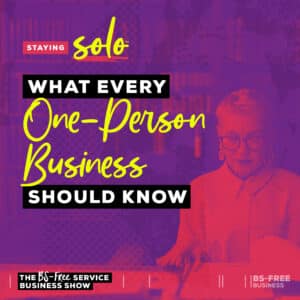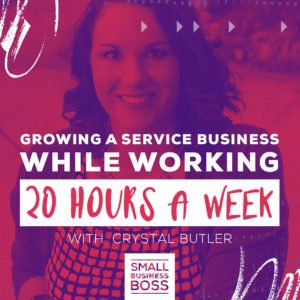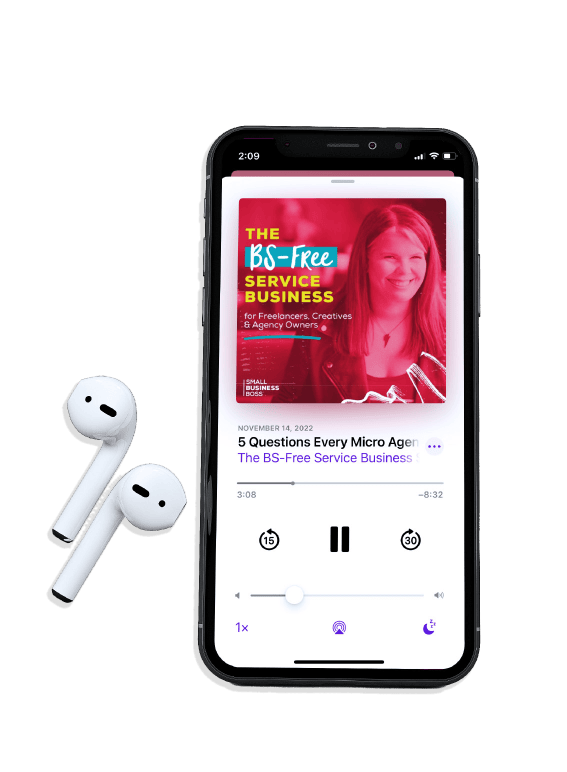
Search the site:
Episode 143: All Things Dubsado for Service Businesses with Kathleen Rass
If you’ve been online for a hot second, you’ve probably heard of Dubsado, which is why I can’t wait to introduce today’s guest Kathleen Rass. She’s going to tell us everything we need to know about Dubsado, including if it’s the right choice for our business and how to get started.
As business owners, we love tools, but there are so many tools that it can be hard to know which ones you need and when you need them. Dubsado is one of the tools I get asked about the most, and if you’re not familiar with it, it’s an all-in-one system to handle everything from proposals to contracts to invoices and so much more.
Today’s guest is Kathleen Rass who’s an expert on all things systems — especially Dubsado — and she’s going to share all the “need to know” about this popular tool.
Kathleen’s bio:
Kathleen Raas works behind-the-scenes to help business owners with the organizational and operational side of running their business. Over the past five years, she’s worked as a project manager overseeing product launches, software conversions, and system implementations. She works one-on-one with her clients to help them evaluate and optimize their systems and operations so they can deliver high-quality work to their clients and turn their half-planned projects into money-making realities.
Tell us a little bit about your business. How do you make money?
- I’m a project manager and an operations strategist.
- I help service providers set up their client and project management systems.
- I also help them just manage their client projects.
If I come to you, and I’m like, “Oh my gosh, Kathleen, I’m a hot mess. I’ve got all these clients, and I don’t know what I’m doing.” What kind of services would you offer me?
- First, I would probably offer you an implementation session to spend a day working through your current client operations systems, to see where you are, what’s going on, and what’s causing the friction right now in providing your services to your clients.
At that point, what happens next? Let’s say I need ongoing support, or you find I’m a big hot mess over in one area.
- So, then I would offer the project management retainer services, which is stepping in and taking the administrator role in your business.
- I’m managing the clients, making sure everything is ready for when you show up to work, that everything’s ready for you to get done when you need to get it done.
- If you’re a copywriter or a designer, that means you have everything ready to go when you’re scheduled to write.
- I step in as the project manager and as kind of the gatekeeper to allow you to show up and be the talent — instead of trying to wrangle everyone and everything behind the scenes at the same time.
So how did you start your business? Obviously, you’re really good at systems and keeping things on track. What’s your background, and how did you end up here?
- I always had an idea that I wanted to start my own business, and in college, I majored in accounting. I was like, “Well, maybe one day I’ll go through the CPA firm and then maybe I’ll have my own small practice at the end of that.” That was kind of my goal.
- I started working in the real world and small businesses, and I actually unintentionally started my business.
- In the job I was at, I offered to help a few local businesses with graphic design and project management.
- Then it really spiraled into a plethora of other services.
- “I can help you with that,” and then it’s, “I can help you with everything.”
- I got burnt out on that pretty quickly because nobody can do everything, but I found that I really, really loved working with and supporting freelancers and small business owners.
- So for the last few years, I’ve been honing in on how I can show up and do the best work for my clients and that’s in the project management and operations space.
- That’s really led to what Simple Ops is now.
You do a lot of work with Dubsado. Can you share what this tool can do for your business? I know it gets talked about a lot in entrepreneurial circles, and it seems like the solution right now that everyone’s recommending, but what does it actually do for us?
- So there are a lot of features. If anyone doesn’t know, it’s an all-in-one business management tool. It can help you manage your leads, send proposals and contracts and forms — forms like client intake forms, project assessment forms, or questionnaires.
- It also has invoicing capabilities, payment processing and really a whole plethora of other features.
- In the broad sense, what it does is it helps you manage the administrative side of your business.
- One thing I strive for — and I find is also really important for my clients— is being able to show up and consistently provide a high level of service.
- Dubsado can help ease the headache of actually demonstrating this to your clients because it presents a very professional face for your clients to see of the administrative side, which is usually behind the scenes and masked in endless email threads.
So onboarding is always a big part of that process, and I always refer to this as where you don’t want your new client to have buyer’s regret. What do we need to think about for our onboarding, and how can Dubsado help make that process go a lot smoother?
- For onboarding, I have two roles. The first one is to keep it simple, and the second one is to keep it consistent.
- So in the vein of keeping things simple, it’s always a really good idea just to map out the bare bones of what you need from your client, from the time they say, “Yes, I want to work on this project with you,” to that first project kickoff call.
- And we want to keep that just as a bullet point list of maybe three or four things.
- You need to send them the contract, you need to send them the invoice, maybe there’s some client intake that needs to be done.
- Then — especially with creatives or consultants — you want to get some kind of assessment of what’s going on right now.
- So it’d be the fourth thing that is a questionnaire trying to figure out where are you now. When you get to that project kickoff call, you can start in on really digging into their problem versus spending that time figuring it out.
- It doesn’t need to be complicated.
- I don’t recommend a 20 question questionnaire, but try to think about it from your client’s perspective in that you don’t want to overwhelm them, but you also need to get the information you need.
- I have a couple of clients, they’re like, I really need them to take these six steps before they get to working with me.
- I kind of had to talk several off the ledge. They want them to go through this mini-course they’ve put together, and I’m like, “That’s very well and good, but they’re hiring you so they don’t have to go through a course.”
- And then the second rule, like I said, is to keep it consistent.
- This is where Dubsado really can come in and help because everything looks the same, everything is in one place — especially if you’re utilizing their client portal — and it helps you look professional in the sense that everything is very uniform, it’s very easy to find, and it’s very easy for them to know what they’re looking at.
So what things do you think are really valuable in Dubsado, but we might not realize they’re there?
- I think within the last year or maybe 18 months, they added the ability for clients to upload PDFs to you, which is great because it keeps you out of a Google Drive or out of a Dropbox.
- I think it’s one of the lesser-known features, but it’s very helpful in trying to keep everything in one place for your clients.
A lot of my clients who use it for their clients like the scheduling and invoicing, so it really creates that truly all-in-one experience. I think that for a lot of people who are overwhelmed with the idea of having multiple tools, it’s a really good way to bring everything under one roof.
- That’s exactly it.
- Something people don’t realize is how much time they’re saving by not having to log into all of the different systems, to try to find that one piece of information they’re looking for.
- Whether it’s a confirmation or it’s a file or it’s the answer to a question, it’s having it all in one place that’s easily accessible to you and to your clients.
I think where Dubsado always comes is if you don’t have a good system for this, moving to an all-in-one system is a great thing. If you have a couple of best of breed tools that work really, really well for you and the system’s working very efficiently, we’re not saying you have to rip that apart and automatically switch to an all-in-one. I think if this is something you don’t have locked down, this is a really good, easy, and simple way to do it.
- Yeah, absolutely. If you have a system that works, there is no reason for you to stop using it, and switch to Dubsado. If it ain’t broke, don’t fix it, right?
- But if you’re finding friction in the process, you’re overwhelmed, you feel (or know) your clients are getting frustrated, you’re new to it, or you don’t have a system in place, these are really good indicators that it might be something for you to look into.
Let’s say I’m in this category of people who are like, “I need Dubsado to save my life.” How do you help clients with Dubsado? If I come to you, and I’m like, “I got it, but I don’t know what I’m doing.” What do you do with me?
- First, we just kind of map out your workflows — what do you need from your clients, what do your clients need from you?
- And then mapping out the workflow of the onboarding through the actual project delivery and management.
- I call that the entire client management workflow.
- Just mapping that out completely outside of the system to figure out how things should work and how things need to flow.
- And then bringing that blueprint into the system and setting it up.
- I go in there and actually implement the workflows, set up packages, set up your contract templates, your proposal templates, all the things to get the setup done for you.
- I migrate existing data for any software systems you have already and then help you integrate with different tools that you may need to extend what you’re doing in the software.
Instead of you spending like 20 hours trying to figure it out over a weekend, you can just hand it over to Kathleen, and it’ll magically be done.
- We really focus in on one particular process that needs to get set up, and I spend a half day getting it set up or a full day getting it set up, and then it’s off your plate.
Lessons:
- Onboarding is one of those things that service business owners can totally overthink. That’s why I wanted to reiterate Kathleen’s two rules for onboarding: keep it simple, and keep it consistent. It doesn’t have to be fancy — it just has to work for you and for your clients.
- If you’re considering switching to Dubsado, consider WHY you want to switch. Does it make sense for your business? Kathleen shared that if what you’re doing is working, you don’t necessarily have to change to Dubsado, but if it’s a mess, that’s an opportunity to streamline.
- A tool like Dubsado really is about providing a consistent experience for your clients and making your life easier. It’s okay to get help to figure out how to make something work for you, your business, and ultimately, your clients. (And if it’s Dubsado, Kathleen can help!)
Links for This Show:

I’m Maggie Patterson (she/her), and services businesses are my business.
I have 20+ years of experience with client services, am a consultant for agency owners, creatives, and consultants, and vocal advocate for humane business practices rooted in empathy, respect, and trust.
Help Not Hype

Tired of the same old BS business advice?
I got you with weekly emails packed full of proven strategy that makes a real difference in your service business.









